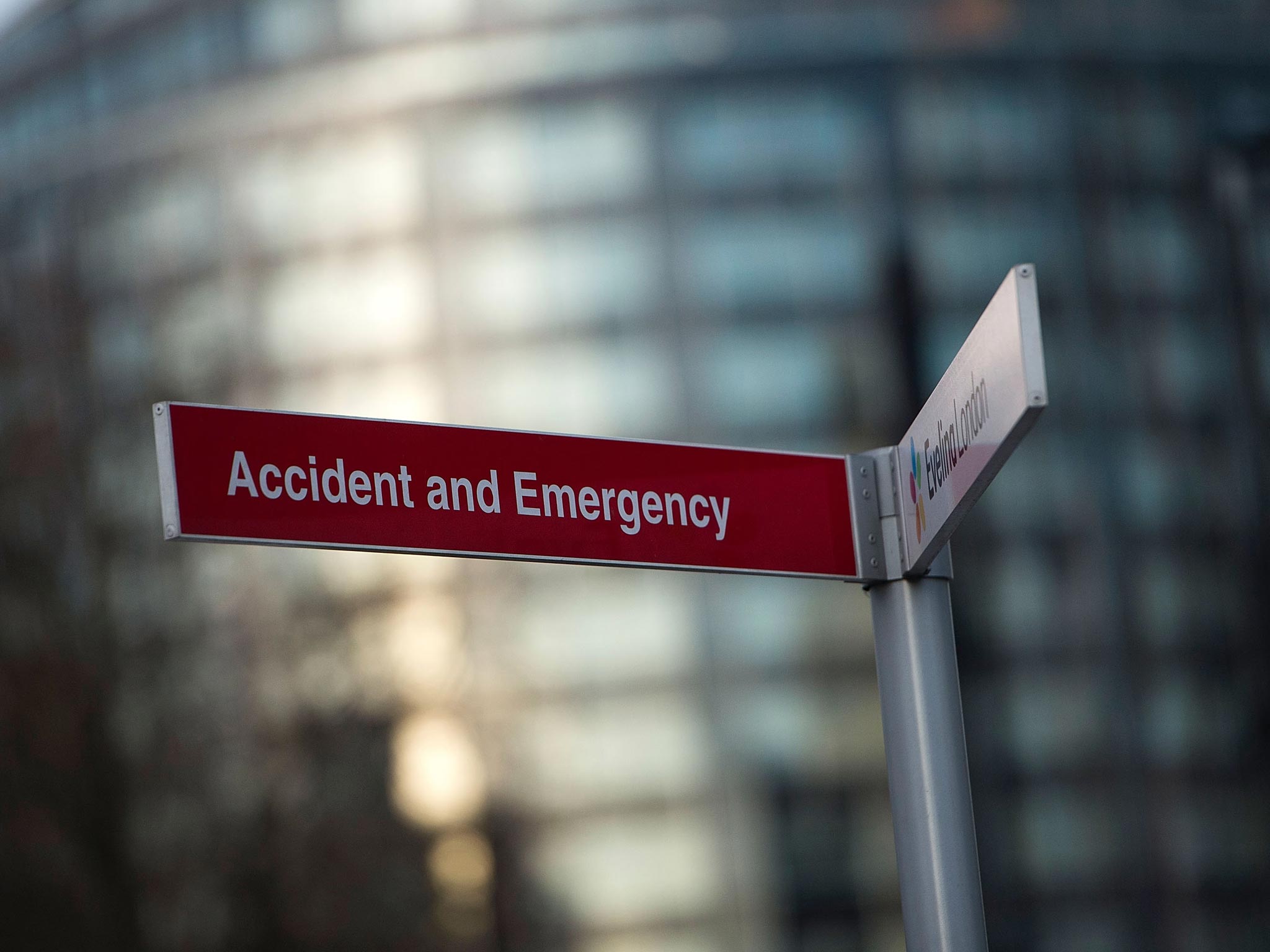Exclusive: NHS crisis looms as A&Es miss waiting time targets

Accident and emergency departments in England have experienced an unprecedented “spring crisis”, missing a key performance target for five weeks in a row and leaving 20,000 patients waiting for four hours or more in the first week of June alone.
The performance of A&E departments, regarded as a barometer for the health of the entire NHS, typically improves in spring as the demand caused by cold weather affecting the elderly subsides.
But the seasonal pattern has been broken, with latest figures revealing that A&Es failed to hit their target of treating or admitting 95 per cent of patients in four hours, for the whole of May and the beginning of June.
Health experts called the target breaches “odd” and “worrying”. Senior health officials fear that the problem bodes ill for the NHS’s capacity to cope in summer – when attendances at A&E peak – and winter, when pressures become greatest because more frail elderly patients need admitting to hospital.
Richard Murray, director of policy at the King’s Fund think-tank and a former senior Department of Health official, told The Independent: “Performance is very seasonal in A&E: you have a bad winter, you have a good spring, that’s what happens every year. This time, rather than lifting up, [the number of patients seen within four hours] has been dipping back down again. If it was the economy and you were doing a seasonally adjusted forecast, this would be bad.”
The threat of a winter A&E crisis last year forced the Government to inject £400m into the sector. In the event, unusually low flu rates helped A&Es cope well. However, that is unlikely to happen again, and the prospect of long queues at A&Es in the winter before a general election will cause serious concern to the Conservative leadership, who know they are vulnerable on the NHS.
Even more damaging would be a summer crisis, which cannot be ruled out given previous annual increases in A&E attendances during the warmer months.
Figures released yesterday showed that there were 442,096 attendances at A&E in the first week of June. Of these, 94.3 per cent were seen in four hours. However, these figures include the performance of minor-injury units and single-specialty emergency departments, which typically perform better. When the performance of the major A&Es – known as Type 1 A&Es, which deal with the vast majority of the most ill patients – is analysed, the outlook is even more concerning. Only 91.6 per cent of patients were seen within four hours – the 48th week in a row that Type 1 A&Es have missed the 95 per cent standard.
Yesterday, health officials admitted the NHS was “undershooting the standard”. “We in the NHS are determined to address this quickly,” said Sarah Pinto-Duschinsky, the director of NHS operations and delivery. “Emergency admissions to hospital remain high as we come out of the winter, and we will redouble efforts to ensure our patients have speedy access to care.”
It is believed the pressures on the system are being driven by unseasonably high numbers of admissions to hospital wards from A&E. So far in 2014, nearly 80,000 more patients have been admitted to hospital from major A&Es than in the same period last year – a 4.9 per cent increase which represents a major spike in demand, above and beyond previous annual increases.
Mr Murray said the increase was “unusual” and had taken the NHS by surprise. “At the moment demand seems to be growing really pretty quickly,” he said. “If you look over April and May, the number of people being admitted into hospital through A&E is up really sharply, at a rate that is not sustainable.”
Renewed worries about A&E are just the latest sign that the NHS, which has been coping with ever-increasing demand without any major funding increase for five years, is reaching the limit of its ability to meet the high standard of care demanded by patients and the Government. The 62-day cancer waiting times target was missed for the first time last month, and another quality standard, the 18-week waiting time from GP referral, was breached in both February and March, although performance recovered slightly in April.
Andy Burnham, Labour’s shadow Health Secretary, said: “These figures reveal A&E departments trapped in a downward spiral. Hospitals are operating above safe levels.”
Last night the Department of Health said it would provide £400m to help the NHS cope with pressure on winter beds – as well as another £250m to reduce the backlog of patients waiting over 18 weeks for treatment.
Join our commenting forum
Join thought-provoking conversations, follow other Independent readers and see their replies
Comments